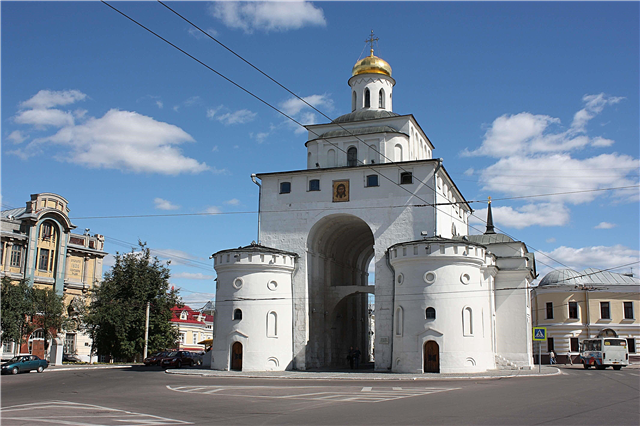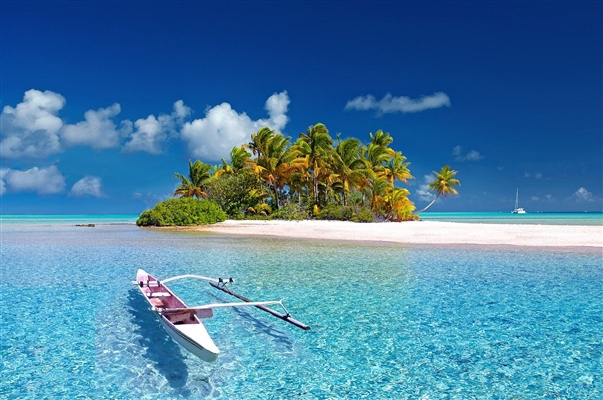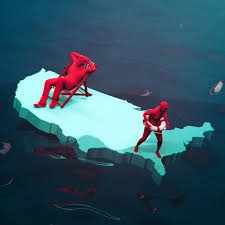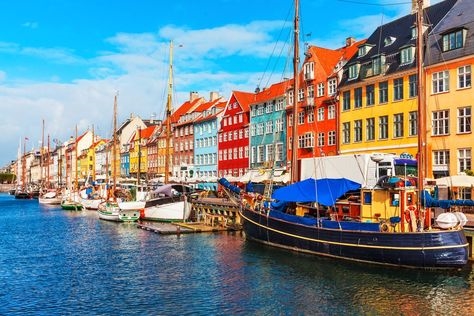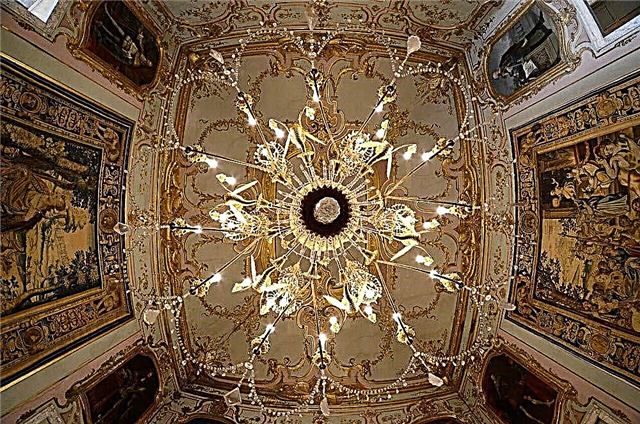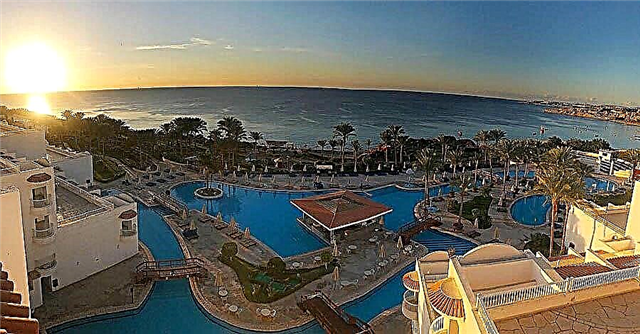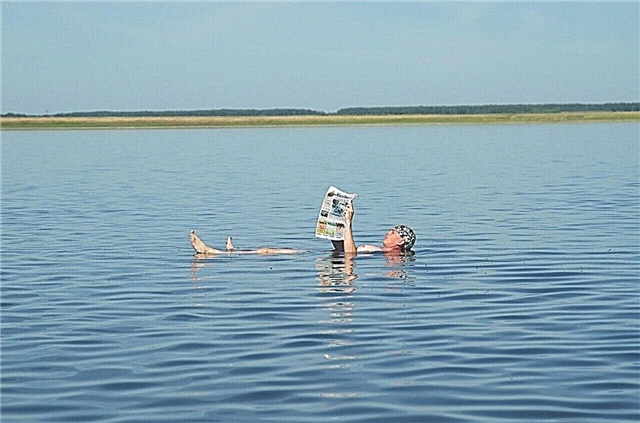Unlike many other Russian border areas, Kurgan Oblast has borrowed little from its southern neighbor, Kazakhstan. In terms of culture and leisure, the region looks like a typical representative of the central part of the country. The sights here are mostly natural, like Medvezhy Lake or the Kurgan Wildlife Refuge, or religious: the Resurrection Cemetery Church, Borovsky Monastery and others.
There are many museums, theaters and other places of education in the region. There are also truly unique objects, for example, a forest in the form of the inscription "Lenin is 100 years old", clearly readable from a bird's-eye view. The locals do not forget about their history either, having organized the Tsarevo Settlement Park in order to preserve the features of the old cities.
The most interesting and beautiful places in the Kurgan region
What to see and where to go? List of the best objects of tourism and active recreation!
Dalmatovsky Assumption Monastery
It was first mentioned in chronicles in 1644. Founded by the Monk Dalmat on the left bank of the Iset. It developed rapidly, was repaired three times after the fires, and had its own seminary. After the revolution, the buildings were given over to a museum, and then to a hospital and a factory. In the early 90s, the monastery returned to its initial status. Although it is operational, most of the buildings are in an unsatisfactory condition.

Lake Bear
Located in the Petukhovsky district. The area is over 6.1 thousand hectares. The maximum depth is about 1.2 m. It has no runoff, the water has a high salinity, because of this, there are no fish and algae. In summer, it warms up to about +20 ° C. 6 islands conditionally divide the lake into Big and Small. A resort has been built on the northern shore, where mud is treated for a number of diseases.

Kurgan reserve
It was formed in 1985 and has a biological profile. It is located on the territory of the Central District and covers an area of more than 31 thousand hectares. The main goals are related to the restoration of populations of animals and birds. Specially protected: desman, ogar, white-headed duck, white-fronted goose, etc. Since the reserve includes settlements and state farms, the development of land in some areas is permissible and is being carried out.

Transfiguration Cathedral in Shadrinsk
The first stone building in the city. Erected at the end of the 18th century, the bell tower appeared in the 20s of the 19th century. The main architectural style is one of the subspecies of the Baroque with influences from other directions. The streets around the cathedral are named after its thrones. The iconostasis is notable for its splendor carving and rich painting. Until the 70s, the external appearance of the temple changed several times, the original outlines were lost.

Forest "Lenin is 100 years old"
The inscription from living trees was created in 1970, the anniversary of the revolutionary was celebrated. It can be found between the settlements with the names Labor and Knowledge. Height - 80 m, length of the object - 600 m. 40 thousand seedlings were used to create it. The inscription is readable only from above, from the ground it looks like an ordinary forest. The project began to be widely discussed only in the 2000s, although it was not a secret before.

Shadrinsky Drama Theater
One of the oldest in the region. It was founded in 1896 on the basis of a fair, where artists gathered, and a sobriety society, which organized all kinds of circles and events. The current building was built in 1910 and can accommodate almost 450 spectators at the same time. The theater has a studio where new actors are recruited every year. She puts on independent performances that are not included in the regular repertoire.

Resurrection cemetery church
Built in the second half of the 19th century in Shadrinsk. This name is derived from its location in the old cemetery. The architectural style is Byzantine, with a three-tiered bell tower erected nearby. Until 1991, only one of the religious sites remained open. The main value is the Tikhvin icon of the Mother of God. It was managed to be preserved in times of trouble, since the mid-40s the shrine has not left the church.

Kurgan Aviation Museum
It has been working since 1985 at the local airport, the only one of its kind in Siberia and the Urals. The exposition includes 15 aircraft exhibited in the adjacent territory. The rest of the exhibits (uniforms, photos, devices, etc.) are distributed by periods and tell both the history of aviation in general and highlight local features. In 2003 the museum became a branch of the local history museum.

Kurgan Regional Museum of Local Lore
Opened in 1951 and originally occupied a church building. In 1991 he moved to the House of Political Education. The museum also includes the planetarium, which was reopened in 2011. The exposition is divided into periods and sub-themes, covering different directions. "Zyryanov Readings" are held, environmental programs are developed, the lecture hall is used for all kinds of thematic events.

Alexander Nevsky Cathedral
Founded in 1896 in Kurgan. In the period after the revolution, the building changed its purpose several times: a museum, a gym, classrooms, a warehouse, etc. Returned to believers during Perestroika, since 1993 it has been a cathedral. A little later, a new iconostasis was installed, repeating the style of the iconostasis of the Archangel Cathedral of the Moscow Kremlin. The main shrine is the ark with the relics of St. Alexander Nevsky.

Chimeevsky monastery
It was founded in 2002 on the basis of a long-standing parish. Religious objects in Chimeevo were mostly wooden, periodically burned down or dilapidated. Therefore, the update happened quite often. In addition to the temple, outbuildings are also part of the male monastery. There are not many monks here. They protect valuable icons, including old ones, and a painted iconostasis.

Chimeevsky holy spring
Located near the village of the same name. The spring springs from the ground, fences are built around it, a flooring and a convenient ladder for descent are laid. The water is considered medicinal, which has not only a religious, but also a scientific explanation. The composition contains a lot of silver, so that for a number of diseases, water can have a beneficial effect. The entrance to the territory is free, many people collect water for future use.

Borovsky monastery
Founded in 1992, and in 2000 there was a formal change in status and renaming into the Monastery of Praise of the Most Holy Theotokos. The cloister includes: the main church, a two-tiered bell tower, a baptismal church, a house church, etc. The nuns maintain an extensive household farm, look after horses, and attend an icon painting workshop. There is a hotel for pilgrims.

Vvedensky monastery
It has existed in various forms since 1742 in the Verkhnaya Techa. Restructuring and transformations are associated with many factors, including a large fire that destroyed the monastery almost to the ground. After a long hiatus, the monastery was opened in 1995. The Nikolsky temple and other buildings were partially restored, among other things, the frescoes were washed and the iconostasis restored.

Gorkoye lake
Located near the village of Zverinogolovskoye. It has a horseshoe shape, the beach is sandy and wide. The average depth is about 4 meters. Mineral springs were found in the northern part. Muds are considered medicinal, they must be applied for only 10 minutes. The bottom is muddy, near the coast there is a strip of mud, in order to get to clean water it must be overcome. There are several sanatoriums and resorts nearby.

Sanctuary of Savin
It is located in the Belozersk region in the floodplain of the river on an elevation. It is called "Ural Stonehenge". This ancient solar observatory dates back to the 3rd millennium BC. Archaeologists have found here two circles with a diameter of up to 16 m. In them squares are inscribed and special recesses were dug. The sacrifices were dedicated to the sun. Until recently, the locals did not go here for fear of evil spirits.

House-Museum of the Decembrists in Kurgan
It was founded in 1975 in the building where the Decembrist Naryshkin lived with his relatives for several years. The interiors of that time have been recreated, largely thanks to the letters of the hostess of the house. The excursion tells about the Decembrist movement and the fates of its participants. On the basis of the museum there is an archaeological circle, intellectual games and literary quizzes are held.

House-Museum of V.K.Küchelbecker
It was opened in 2005 in Kurgan in the house where the poet and social activist lived with his family for a year. The house has been restored both inside and outside to match the mid-18th century. The exposition is dedicated not only to Kuchelbecker, but also to his relatives. The collection of the museum consists of personal belongings, letters, early editions and household items of the time. There is a lecture hall where literary evenings are regularly held.

Kurgan Regional Philharmonic
Formed in 1943. The only institution of this type in the region. Engaged in both concert and educational activities. The first building is a women's gymnasium, later rebuilt into a shop, the current one was built in 1984 specifically for the Philharmonic. A special Shostakovich festival is held on a regular basis (once every two years). A recording studio was opened in 2011.

Regional cultural and exhibition center
Created in Kurgan in 1993 with the aim of promoting the work of local artists. The current building has been in use since 2002. The exhibitions are updated every month. Some of them travel to neighboring cities. Although the focus is on local artists, sculptors and writers, the center also welcomes guests from other regions. The number of halls allows you to do this without harming your own projects.

Kurgan Drama Theater
Founded on the basis of the Shadrinsky Theater in 1943. Initially, he was given a gymnasium premises. After 10 years, the troupe moved to a new building, where it is still located. From time to time, invited actors from the capital appear in local performances. The theater participates in Russian and international festivals, and also hosts groups from other cities on its stage.

Park "Tsarevo settlement"
In the past, this was the name of the city of Kurgan, where the park is located. Based on the available historical materials, the authors of the project recreated in 2013 a wooden fortress - the first structure that appeared in these lands in the 17th century. In addition, there is a concert venue, themed entertainment, an excursion into the past, a pottery workshop, colorful photo sessions, etc. There are souvenir shops.

House of engineer F. F. Ostapets
The building is located in Kurgan and stands out from the usual architecture of the city. This wooden castle has narrow carved windows and a figured roof. The building was built at the beginning of the 20th century by order of the engineer Ostapets. The house is probably a symbiosis of styles and recommendations coming from different fashion trends of the time. Frequently changed owners and appointments. Now it houses a municipal institution.

Erokhinsky "kvashni"
Located in the Yurgamysh district. Mud wells are crusty and look like sour dough, hence the name. If you pierce them, then dirt of different shades will appear on the surface. In some pits, you can fall through completely. "Kvashnyi" move around the territory: in one place they dry up, in another they are formed. The mud has practically no smell, the study of the phenomenon continues.

Enlightened arboretum
Created in 1894 as a nursery at the Forestry School. Both the plants of the region and samples brought from other parts of the country were planted. About 200 plant species grow on the territory. The main attraction is the pine tree, which is more than 200 years old. It is declared a regional natural monument. Nearby in 2010, the Kurgan Regional Arboretum was organized.


